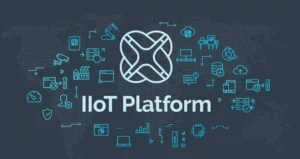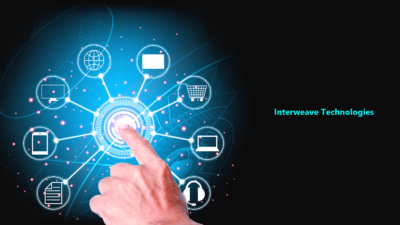A self-contained display-and-webcam combo gadget designed exclusively for sending and receiving video calls—videophones, if you will—feels both like an extravagance and a need in a stay-at-home society. On the one hand, you almost certainly already have a PC with a webcam at work or at school. It’s likely that your phone has similar capabilities. On the other hand, you don’t want to spend all day at your desk, and talking on the phone isn’t ideal for lengthy, unhurried chats with friends and family. A foldable camera-enabled screen designed for kitchens and living rooms suddenly appears to be a lot more tempting.
The more informal of the company’s two new video-calling gadgets, the Portal Go, fits the flex screen role perfectly. It features everything you need for a highly pleasant, easy-going video-call arrangement, including an extra-wide 10-inch display, a 12MP webcam with a 120-degree field-of-view, and excellent stereo sound. It has a small app library, but it may be used for other things like a portable smart speaker, a digital photo frame, and a web-enabled cookbook. (There’s also a web browser, which gives you access to a considerably broader set of tools.) Though there’s still space for improvement, the Facebook Portal Go makes a compelling argument for an entire class of devices that I’d previously dismissed.
Related: Facebook Audio Ads – How to Create One?
A smarter screen equals a smarter life.
Although the Facebook Portal Go isn’t the first smart screen, its huge display, wide-angle camera, and light web app support make it an attractive internet hub for PC-free environments, such as most kitchens.
The design and features of the Facebook Portal Go
With the screen turned off, the Facebook Portal Go resembles a large doorstop. The wedge, which measures 10.10 by 7.44 by 3.00 inches (WDH), is draped with a grey cloth that gives it a housewares touch. Of course, this is by design: The Go is a more casual version of the Portal, as opposed to the less mobile but more powerful Portal+, and is designed to mix in with couches, cushions, and counters. In this context, casual also means transportable. The Portal Go has a 44 Watt-hour battery that allows you to carry it about and position it without having to worry about running out of power.It just weighs 3.23 pounds and comes with a built-in handle, making it incredibly easy to carry around the house or on a trip. Even still, finding a location near an outlet would be advisable, as it should only last 5 hours of video calls or 13 hours of audio-only conversations.
What do you think of the image?
One of the Portal Go’s odder features is its display. The 8.5-by-5.31-inch screen has an extra-wide resolution of 800 x 1280 pixels. Although this is technically HD, due to the low pixel density, it isn’t quite as sharp as what you’d get on a PC, TV, or flagship smartphone. If you want to view Netflix, YouTube, or any other streaming content, the resolution will most certainly be reduced to 720p, which is less than ideal for video. Nonetheless, the majority of the content appears to be in good shape on the screen. In digital photo-frame mode and the pictures app, photographs are generally sharp and vibrant. Images on the internet appear to be similarly “exact.” (It probably helps that you’re gazing at the 10-inch screen from a distance, as opposed to a phone or a computer monitor.)
A camera with a 4 megapixel resolution.
The Portal Go’s 12MP camera does not take the typical head-and-shoulders photos that a PC webcam takes. It has a 125-degree ultrawide field of view, which allows you to record far more of your surroundings and/or comfortably fit numerous people on a conversation. It’s no substitute for a good PC webcam; when I sit the Portal on my desk, it captures my entire upper chest as well as much of the office behind me—far more than a PC webcam’s perfectly positioned and tightly edited stream. Plus, if you set the ultrawide lens too close, you’ll get a fisheye look. That isn’t a compliment to anyone.It does, however, thrive in public settings such as living rooms and kitchens.
It can catch my entire couch if I place it on my living room coffee table, allowing three people to comfortably hang out on a call. You can probably accommodate two to four people in a shot in a small-to-medium kitchen. Most webcams are designed to catch a single person sitting at a desk, so this at the very least expands your options. The Portal Go camera is intended to be a “set it and forget it” camera. Apart from rotating the gadget, you can’t change the camera’s focus or framing. The camera automatically adjusts. The Portal Go’s ultrawide lens can be used to lightly move and pan its image, focusing on the subject(s) during a video conference or photo booth session.
Adaptive lighting is another function of the camera, which adjusts the colour temperature to fit the illumination in the environment. Relying on these options provides a convenient experience, but it also seems restrictive. It rarely makes a mistake, but it can only capture a flawless photo under a few circumstances: framing two to three people in a well-lit room with somewhat neutral lighting. I wouldn’t use it for a business conversation or content production where you need to look professional, but it does keep you in frame, which is vital given the shot’s width.
What about the sound of the Facebook Portal Go?
Surprisingly, the Portal Go performs really well in terms of audio. It has two 5W stereo speakers on each side, as well as a 20W subwoofer, for surprisingly clean sound and thunderous bass. It produces great audio during video conversations, but it really excels when listening to music on the speaker via the Spotify and Pandora apps, or any other web-based music player. The Portal Go isn’t a replacement for a home theatre system, but it can definitely keep up with (and, more importantly, replace) an audio-only smart speaker.
The Facebook Portal Go, on the other hand, employs a four-mic array to capture accurate talk throughout its larger-than-average viewing range. The picture quality is good, but it’s easily muddled by surrounding noise. (This isn’t surprising given the lack of a boom or other means of suppressing ambient noise.) In addition to making calls, the Portal Go works with both the Facebook virtual assistant and Amazon Alexa, allowing you to get the most out of your smart speaker. So long as I’m in the same room, the mics picked up my occasional requests to hear the weather and bite-sized news tidbits.
What types of video calls are you able to make?
Because the Portal Go is a Facebook product, it encourages you to use Meta-owned services to make calls. However, it isn’t completely exclusive. The Portal Go comes with apps for making video and audio calls via Facebook Messenger, WhatsApp, Zoom, and Cisco WebEx when it first launches. In principle, you should be able to use the Portal Go’s web browser to make calls through other providers, but this isn’t a flawless procedure. I attempted, but failed, to join multiple Google Meet calls via the browser. As a result, the Portal Go is only for users who use Facebook and Zoom for the majority of their video calls.
Related: Errors in Facebook, Instagram and WhatsApp
What additional apps do you know about?
The Facebook Portal Go is a versatile device that is primarily used for video conversations. You may create a photo album to use as a screensaver for the Portal, turning it into a digital picture frame, in addition to its functions as a smart speaker. It also has a photo booth feature that allows you to take pictures and film short 30-second videos. It also includes “Story Time,” an interactive augmented reality app that displays a series of camera overlays based on children’s stories. I don’t have children, so I’m not the target demographic, but the interactive element feels a little thin—more it’s of a tech demo than an actual exercise.
There is a modest library of Portal apps to download for auxiliary services, including music platforms like Spotify and Pandora, a Food Network recipe app, and an app that plays CBS news 24 hours a day, seven days a week. (There’s also a Plex app because this is a gadget with a screen.) The app lineup includes alternatives for most of the activities I’d anticipate people to do with the Portal Go, but it’s a modest selection. The list appears to have been curated to narrow the scope of what the Portal should or might be used for, rather than to provide consumers with a larger range of possibilities.
However, don’t forget about the web browser!
Fortunately, the lack of native apps has no impact on the Portal Go. You can use the app’s web browser to access most major services and platforms without having to download a separate app. Netflix, YouTube, and Twitch are all available. If you use a third-party programme with a web version, such as Pocket Casts, you can listen to podcasts. You can go to mobile-friendly websites like NYT Cooking, which are typically superior than the Portal’s native apps. Importantly, you can build a bookmark icon that will appear alongside the native apps you’ve downloaded in the apps menu, thereby blurring the line between the web and native app experiences.
In reality, web versions of some platforms with native apps may be preferable. For example, the Portal’s Spotify app only displays pre-made playlists. There are limitations, as I already stated. Accessing video chats over the internet, ironically, appears to be a non-starter. I wouldn’t recommend doing anything that takes a lot of typing, either: the on-screen keyboard is functional but clunky and difficult to type on. Despite the Portal platform’s weak app selection, the online experience is excellent enough to prove that the Portal Go can be a versatile way to bring the web into a room without a TV or PC.
Related: The 5 components for a successful social media strategy
So, who is the best candidate to purchase the Facebook Portal Go
To be honest, I wasn’t convinced that people would require a videophone such as the Portal Go. After dismissing smart speakers as useless and intrusive, I concluded that these devices would be of little use to anyone who already had a laptop. However, the Portal Go has persuaded me to believe in the videophone notion. It reframes personal video calling and gives it a more relaxed vibe. I also liked being able to use a device other than my phone or laptop in my kitchen to browse the web, view YouTube, and listen to music or podcasts without having to use my phone or laptop. Although I can perform all of these things with devices I already own, utilising the Portal Go (or anything similar to it) feels a little more casual.
It’s difficult to say whether the Facebook Portal Go is the best solution. It isn’t without flaws, difficulties, and restrictions that disqualify it. It may or may not be a suitable fit depending on the platforms you use for video conversations and how important display resolution is to you. Those concerns, however, will differ from person to person. Overall, the Facebook Portal Go delivers on the promise of the dedicated video-calling device—whether you call it a videophone or not.








